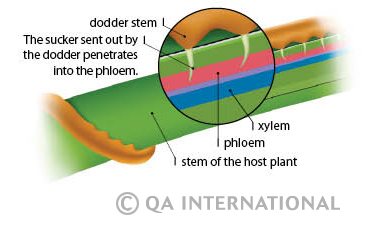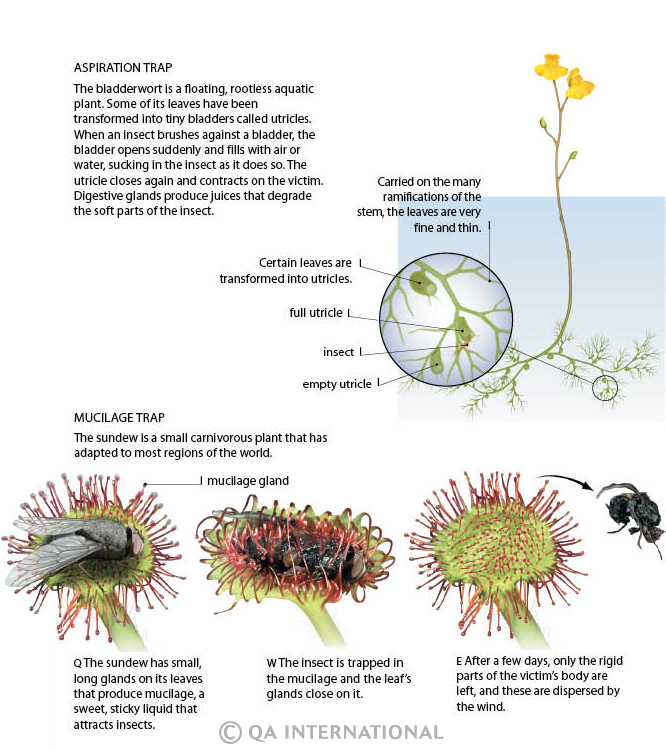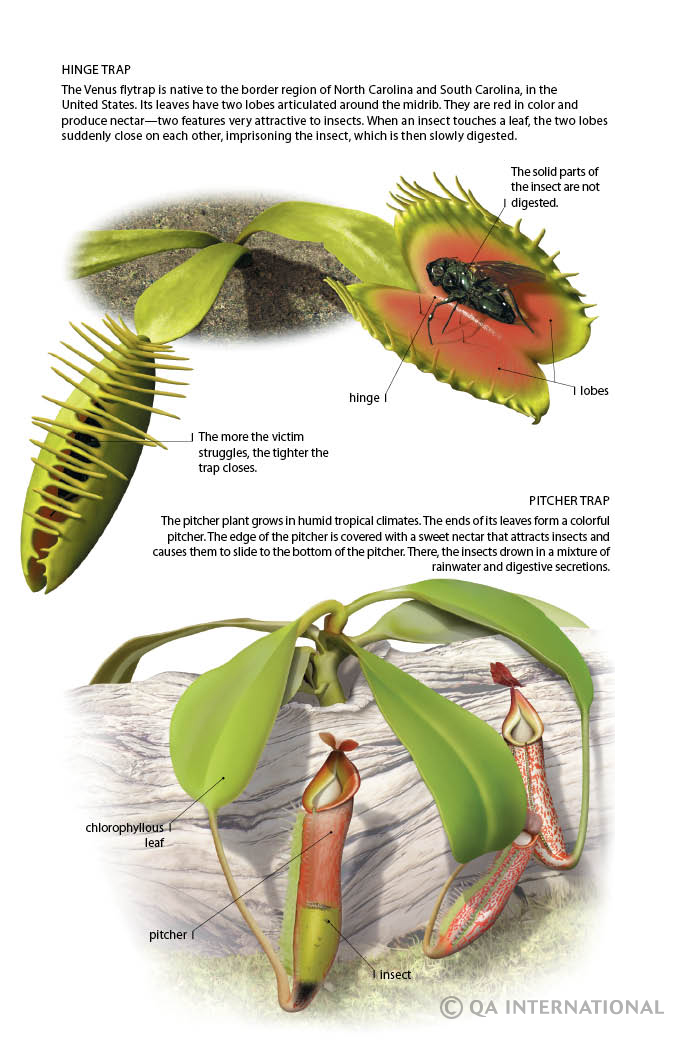Heterotrophic plants: Living at the expense of others
Chlorophyllous plants make their own food by photosynthesis, from water and minerals drawn from the soil. They are autotrophic. In contrast, heterotrophic plants are incapable of feeding themselves. They draw all or part of their nutrition from other living beings. There are different types of heterotrophic plants, depending on their relationship with their host. In symbiosis, the heterotrophic plant and its host both benefit from their association. Parasitic plants, on the other hand, use their host’s resources for themselves alone.
Symbiotic plants
Symbiosis is the association of two organisms that mutually benefit from their life together. Lichens are formed of fungus and alga living in symbiosis. The chlorophyllous alga makes the organic matter that both partners need, while the fungus supplies water and minerals for the pair. Lichens generally grow on the surface of trees and rocks.
Mycorrhizae (the association of a fungus and the roots of a tree) are also examples of symbiosis. The fungus benefits from the organic matter that circulates in the root, while the tree profits from greater contact area with the soil, and thus better access to water and minerals. Mycorrhizae are very common: 80% of flowering plants and conifers harbor a fungus in their root system.

Parasitic plants
Parasitic plants are unable to perform photosynthesis and thus are completely dependent on their host. Most of them, such as dodder, have suckers, a sort of root that penetrates the host’s stem to the sap-conducting vessels and sucks out the elaborated sap.
Dodder is a herbaceous plant that lives as a parasite on many plants, both herbaceous and woody. It has small white flowers and reddish stems that wind in tendrils around the stems of the host plant. It feeds itself exclusively on the organic matter produced by its host, which it pumps directly from the phloem with its suckers.
 h2>Semiparasitic plants
h2>Semiparasitic plants
These plants have chlorophyll and therefore can make their own food by photosynthesis. However, since they have no roots, they must draw water and basic minerals from a host by extracting its raw sap. Mistletoe is one example. This semiparasite grows in tufts on the branches of many trees. Its translucent berries contain a characteristic very sticky substance. Mistletoe sends its suckers into the vessels of its host’s xylem to draw out raw sap. It then uses this raw material to make its own food through photosynthesis.

Carnivorous plants
Carnivorous plants are capable of making their own food by photosynthesis. However, the animals that they capture supply a nutritive supplement that enables them to survive in nitrogen-poor ground that is acid and marshy, such as peat bogs. There are about 600 species of carnivorous plants. They capture mainly insects, which they digest slowly with digestive juices. Carnivorous plants use various strategies to trap their prey. Half of the species capture their prey by aspiration: the animal is sucked into a small sac, where it is digested. Almost one-third of carnivorous plants trap their victims in mucilage – a viscous nectar in which the insect becomes stuck – and then digest them. Some 100 plant species have pitcher traps, a sort of well from which the trapped animal cannot escape. Finally, hinge traps are spectacular but very rare: only two known species use them.






